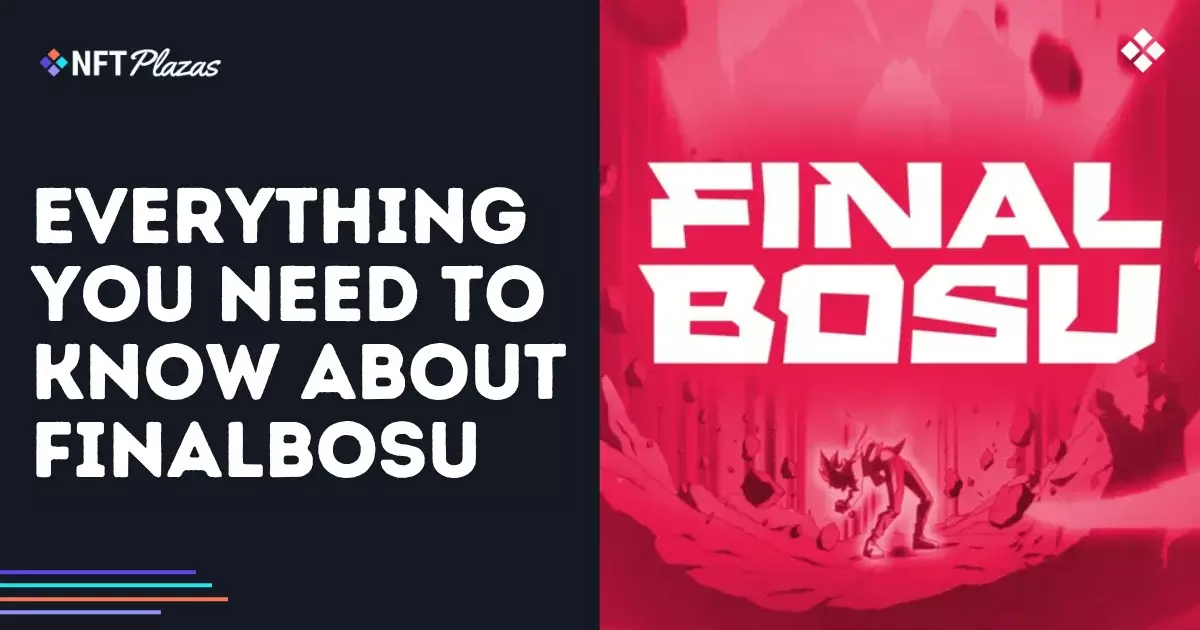Finalbosu emerges amidst the growing craze of web3 and NFTs, promising to transcend traditional anime fandom by creating an interactive, community-driven universe. At its core, it seeks to blend the allure of anime aesthetics with the revolutionary potential of blockchain technology. However, beneath the glossy surface lies a complex portrait of optimism marred by operational and philosophical doubts. The project’s narrative of personal growth against insurmountable odds captures the aspirational spirit that many enthusiasts crave, but it also masks fundamental issues about sustainability, community trust, and the true utility of NFTs beyond speculative assets.
While envisioning a future with gaming, animation, merchandise, and a metaverse, Finalbosu’s track record, marked by a successful launch on Abstract Chain, should not obscure the harsh reality of executing such expansive plans. The short-term success of the collection reflects effective marketing and the power of exclusivity, but it’s equally important to ask whether these are enough to sustain the project long-term. The high-energy launch, characterized by rapid sellouts, often disguises the risks of overhyping a project that has yet to demonstrate genuine utility or the ability to deliver on its lofty promises. Convincing a skeptical audience that this is more than a fleeting trend will require more than just aesthetic appeal and community hype.
The Strategic Flaws in Community-Centric Ideology
Finalbosu’s emphasis on community involvement seems admirable on paper but raises questions about the pitfalls of participatory IP development. The narrative positions NFT holders as integral creators shaping the universe, which aligns with modern Web3 ideals. Yet, this model risks diluting accountability, leading to inconsistency in content, or worse, governance gridlock. As with many community-driven projects, there is a danger that the base becomes divided over direction or that promises of shared ownership are more symbolic than substantive. The philosophy of “co-ownership” and community input, while empowering, can also become a crutch, delaying decision-making and creating a fragile ecosystem susceptible to factional disputes.
Furthermore, the focus on collectibles representing characters and lore in a universe of personal growth suggests a layered storytelling approach. Still, the delay in releasing detailed plans for future projects such as games or extensive animation signals a lack of concrete backing, which could undermine community confidence. When a project heavily relies on community participation, it must balance transparency and realistic timelines. Overpromising and underdelivering risks disillusionment, especially when initial hype fades.
The Double-Edged Sword of Blockchain Evolution
Launching on Ethereum and Abstract Chain was a strategic decision—Ethereum’s established reputation lends trustworthiness, while Layer-2 networks promise faster transactions and lower fees. Yet, this technical choice underscores a broader dilemma: can Finalbosu leverage blockchain genuinely as an enabler for creative expression without falling prey to speculative chaos? The NFT market’s history is fraught with projects that soared on hype only to crash when the hype faded, leaving investors and fans disillusioned.
The decision to expand to Abstract Chain, a newer platform by Pudgy Penguins’ creators, appears to aim for lower costs and broader accessibility. Nevertheless, this shift might fragment the ecosystem, fragmenting communities across multiple chains and diluting the ‘authenticity’ of ownership. Moreover, the market’s volatility means that holding NFTs as a form of participation or influence can suddenly lose value, making the “growth path” philosophy dubious when financial stakes are high. How far can community-driven narratives hold weight when the foundation itself is tethered to a speculative market notorious for boom and bust cycles?
The Myth of Sustainability: Will Finalbosu Deliver on Its Promises?
Despite the impressive initial momentum, skepticism about Finalbosu’s long-term sustainability remains justified. The project’s master plan involves a broad expansion: games, metaverse spaces, animation, merchandise—all built around a core of NFTs. Yet, creating high-quality interactive experiences, especially within a web3 context, demands substantial capital, technological expertise, and time—resources that many NFT projects historically struggle to secure or sustain.
The risk, then, is that Finalbosu’s narrative of ‘against all odds’ becomes a hollow mantra rather than a lived reality. The company’s team boasts considerable experience in branding and visual design—valuable assets—but expertise in game development, animation, or large-scale IP management is less evident. If they cannot meet expectations with consistent, tangible product releases, the project risks fading into obscurity, with community faith waning.
Additionally, tokenomics and reward systems, such as VIP access to the Dojo metaverse and lore-based leveling, may attract early adopters but might not hold their value if the ecosystem fails to evolve meaningfully. The complexity of establishing a sustainable franchise that genuinely bridges digital collectibles and mass media cannot be understated. Without decisive action and tangible deliverables, Finalbosu’s lofty ambitions risk becoming yet another ambitious dream swallowed by the harsh realities of the crypto and anime industries.
















Leave a Reply